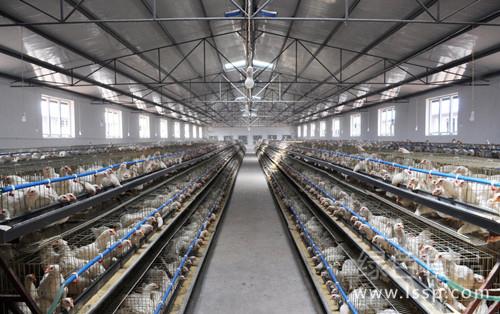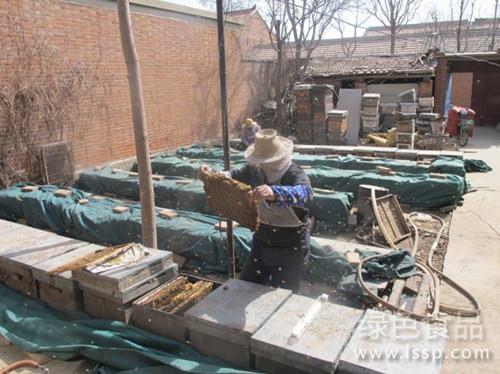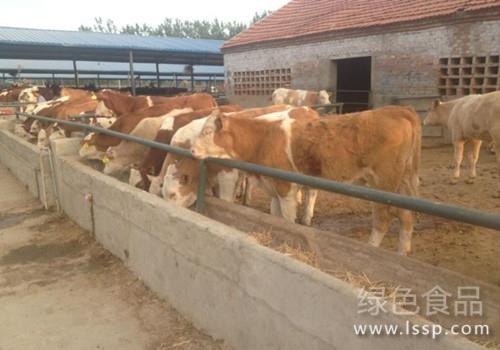Prolapse of anus in layers affects laying how to treat prolapse of anus in laying hens

Laying hens
1 strengthening breeding:
To cultivate excellent layer breeds, on the one hand, they are high-yield and disease-resistant laying hens; on the other hand, they can be raised in cages or scattered to meet various needs.
(2) strengthening feeding and management:
The main results are as follows: (1) formulate a reasonable light time. According to the growth situation of each breed of laying hens, a reasonable lighting procedure was established. During the breeding period, the light was 8 hours a day to ensure that the sexual maturity and body maturity of the chickens were consistent. With the beginning of laying, the light time was gradually increased until 16 hours per day and the light intensity was 10-60 Lux.
(2) provide high quality diet. Layers need different nutrients in different growth periods and different stages, so it is necessary to ensure an adequate supply of nutrients. After transferring from the breeding house to the laying house, the body weight increased significantly with the increase of feed per week (mainly for body maturity and reproductive system development). The feed quantity is measured according to the weight gain of hens, on the one hand, to control the excessive growth of hens, on the other hand, to maintain the strong appetite of laying hens.
(3) keep good uniformity. To ensure the uniform growth of the body weight of laying hens during the breeding period, the feed quantity should be increased steadily. When the hens are transferred and divided into groups to produce stress, the feed quantity should be increased appropriately so that it can grow steadily. After grouping, feeding should be carried out in time, large, medium and small chickens should be fed separately, and the feed quantity should be calculated accurately to ensure that the uniform feed is accurate and timely, so as to improve the weight uniformity of the chicken population.
(4) the feeding environment was improved. Strengthen the daily environmental hygiene of the henhouse; do a good job of ventilation and heat preservation of the henhouse; remove the feces in the henhouse in time to reduce the damage of harmful gases to the respiratory tract mucosa of laying hens; do a good job of stress training before giving birth; reduce noise around the henhouse; do a good job of anti-stress work.
(5) Disease prevention. Do a good job in vaccine prevention of chicken influenza, Newcastle disease, infectious bursitis, infectious bronchitis and other diseases; also need to carry out daily health care every month to prevent digestive tract diseases and salpingitis caused by salmonella and Escherichia coli.
(6) early detection and early treatment. When breeders find prolapsed chickens in their daily management, they should pick out them in time, appropriately reduce their feed intake, fully wash the protruded part with disinfectant in the henhouse, and then bring the protruded part into the abdominal cavity, when the situation permits, it can be fixed with sutures; you can also use 6: 12g boiled water of Lobelia lanceolata, honeysuckle and Solanum nigrum to feed and rinse the affected part twice a day.
(7) Chinese herbal medicine prevention. Before the peak of egg production, add 1% Atractylodes macrocephala 10 g, Codonopsis pilosula 15g, Radix angelicae Sinensis 15g, Radix angelicae Sinensis 15g, tangerine peel 6 g, Bupleurum 5g, Cimicifuga 5g-grilled licorice 5g, crush and add according to the proportion, after 3 days, stop medicine for 1 week, and then feed for 3 days; or add 1% 2% gypsum powder to the feed for prevention, and the effect is good.
- Prev

How to restore the population potential and make use of Honey Source the main points of the management of honeybees in spring
How to restore the population potential and make use of Honey Source the main points of the management of honeybees in spring
- Next

What if a long journey leads to diarrhea in beef cattle?
What if a long journey leads to diarrhea in beef cattle?
Related
- On the eggshell is a badge full of pride. British Poultry Egg Market and Consumer observation
- British study: 72% of Britons are willing to buy native eggs raised by insects
- Guidelines for friendly egg production revised the increase of space in chicken sheds can not be forced to change feathers and lay eggs.
- Risk of delay in customs clearance Australia suspends lobster exports to China
- Pig semen-the Vector of virus Transmission (4)
- Pig semen-the Vector of virus Transmission (3)
- Five common causes of difficult control of classical swine fever in clinic and their countermeasures
- Foot-and-mouth disease is the most effective way to prevent it!
- PED is the number one killer of piglets and has to be guarded against in autumn and winter.
- What is "yellow fat pig"? Have you ever heard the pig collector talk about "yellow fat pig"?

